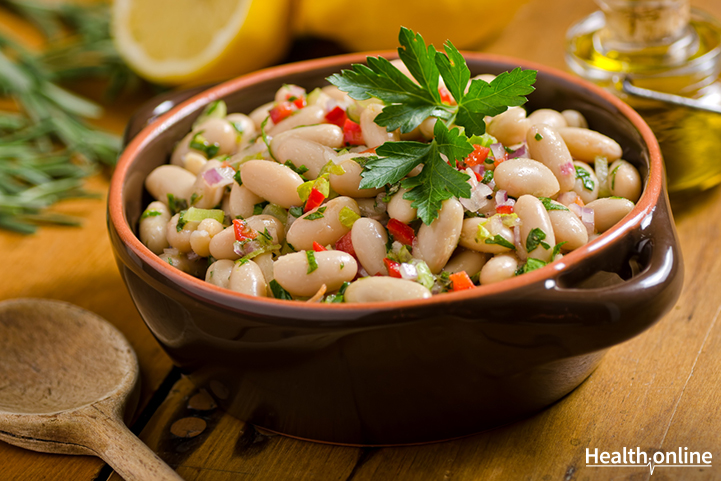
DASH: A Primer on the Heart Healthy Diet
DASH stands for Dietary Approaches to Stop Hypertension . It is a lifelong approach to healthy eating. It was originally created to lower blood pressure without any medication, as part of a research study sponsored by the US National Institutes of Health.
Purpose of the DASH diet
- The most definitive aim of DASH diet is that if you follow it religiously, you can reduce your blood pressure by a few points in a span of just two weeks.
- Over a period of time, the systolic blood pressure would drop by 8-14 points, which makes a significant difference in the earlier health risks.
Guidelines of the DASH diet
The DASH diet research is based on the concept of reaching and maintaining a healthy weight.
- With an intent to quench hunger, the meals and snacks are balanced with bulky, filling foods (fruits and vegetables)
- There is also an inclusion of foods that are protein-rich and/or contain heart healthy fats, to keep the person well fed.
- The meal plans aid in avoiding the blood sugar roller coaster, which is one of the main causes of unhealthy cravings.
- The plan is also generous on protein, which helps to maintain more muscle while losing weight . The protein balance in the diet also helps to avoid a slowdown in metabolism.
Characteristics of the DASH diet plan
- Rich in fruits
- Rich in vegetables
- Low in fat or nonfat dairy
- Includes whole grains, nuts and beans
- Includes lean meats, fish and poultry
- High fiber and low to moderate fat
Instead of suggesting specific foods to eat, the DASH diet recommends a dietary pattern that emphasizes the number of servings of different groups of food. Based on a 2000-calorie diet the number of servings that should be aimed for are decided.
Recommended Read: Shed those Pounds With This Amazing 1200 Calorie Diet Plan
Whole Grains: 6–8 Servings per Day
- 1 slice of whole grain bread
- 1 ounce of dry, whole grain cereal
- 1/2 cup of cooked rice, pasta or cereal
Vegetables: 4–5 Servings per Day
- 1 cup of raw, leafy vegetables like spinach or kale
- 1/2 cup of raw or cooked vegetables like broccoli, carrots , squash or tomatoes
- 1/2 cup of vegetable juice
Fruits: 4–5 Servings per Day
- 1 medium fruit or 1/4 cup of dried fruit
- 1/2 cup of fresh, frozen or canned fruit
- 1/2 cup of fruit juice
Dairy Products: 2–3 Servings per Day
- 1 cup of low-fat milk or yogurt
- 1.5 ounces of low-fat cheese
- Lean Chicken, Meat and Fish: 6 or Fewer Servings per Day
Nuts, Seeds and Legumes: 4–5 Servings per Week
- 1/3 cup or 1.5 ounces of nuts
- 2 tablespoons of nut butter
- 2 tablespoons or a half ounce of seeds
- 1/2 cup of cooked legumes
Fats and Oils: 2–3 Servings per Day
- 1 teaspoon of soft margarine
- 1 teaspoon of vegetable oil
- 1 tablespoon of mayonnaise
- 2 tablespoons of salad dressing
Candy and Added Sugars: 5 or Fewer Servings per Week
- 1 tablespoon of sugar
- 1 tablespoon of jelly or jam
- 1 cup of lemonade
Sample DASH meal plan for a day
Breakfast
- 1 cup (90 grams) of oatmeal with 1 cup (240 ml) of skim milk
- 1/2 cup (75 grams) of blueberries
- 1/2 cup (120 ml) of fresh orange juice.
Day snack
- 1 medium apple
- 1 cup (285 grams) of low-fat yogurt.
Lunch
- Tuna and mayonnaise sandwich made with 2 slices of whole grain bread
- 1 tablespoon of mayonnaise
- 1.5 cups (113 grams) of green salad
- 3 ounces (80 grams) of canned tuna
- 1 cup (248 grams) of vegetable soup .
Evening snack
- 1 medium banana.
Recommended Read: The Whole 30 Diet Plan: A Primer
Dinner
- Chicken breast 3 ounces cooked in 1 teaspoon of vegetable oil with 1/2 cup (75 grams) of broccoli
- Carrots 1/2 cup (75 grams) served with 1 cup (190 grams) of brown rice.
Benefits
- Lowers blood pressure without any medication.
- Reduces the risk of many diseases like cancer, stroke, heart disease, heart failure, kidney stones, and diabetes.
- Effective way to lose weight and become healthier.
- Targets belly fat, manages metabolic syndrome and reduces the risk of developing diabetes.
Keep yourself updated with the latest on Travel Health. Like us on Facebook and follow us on Twitter for more on Health, Diet & Nutrition and Fitness. Also, check out our Health Tools and try out our health-related Quizzes.




